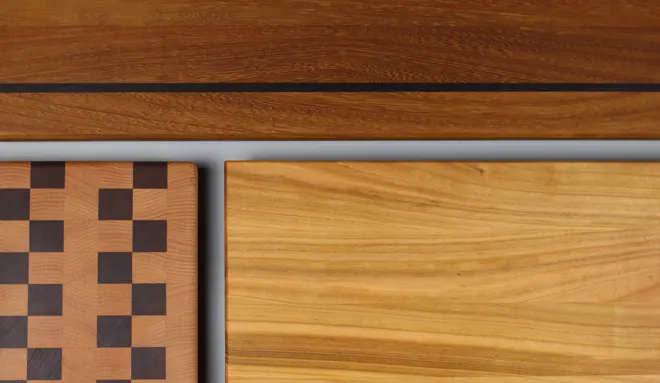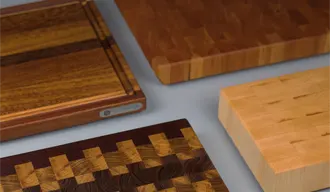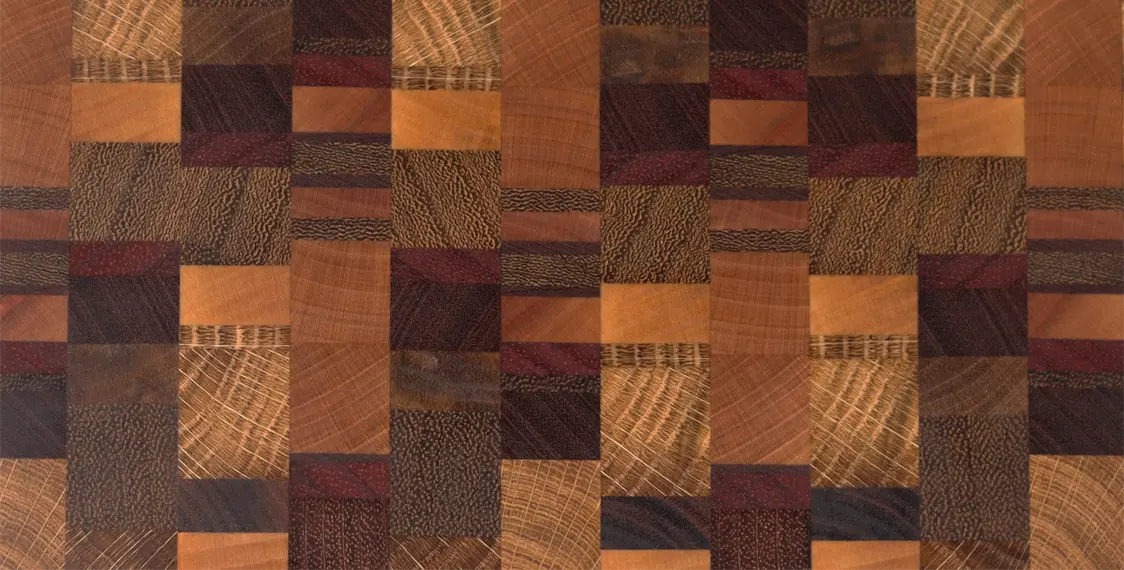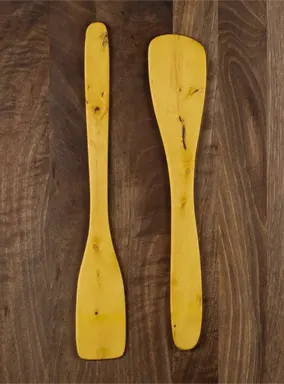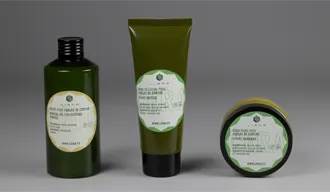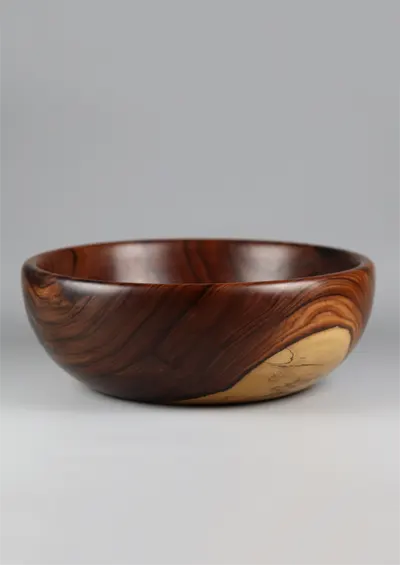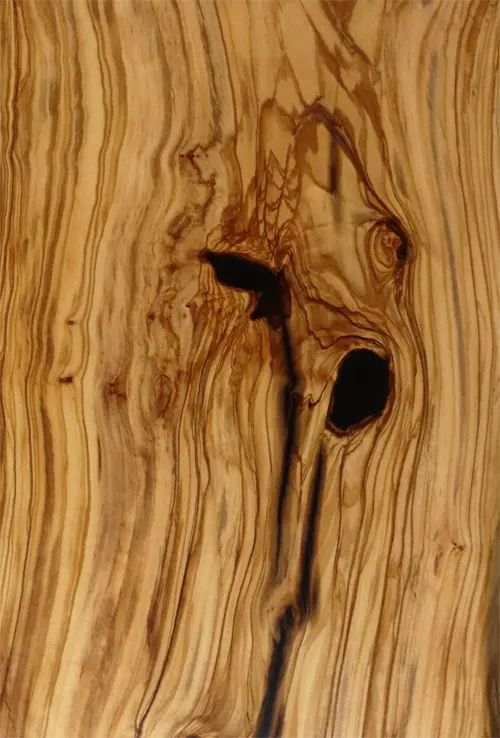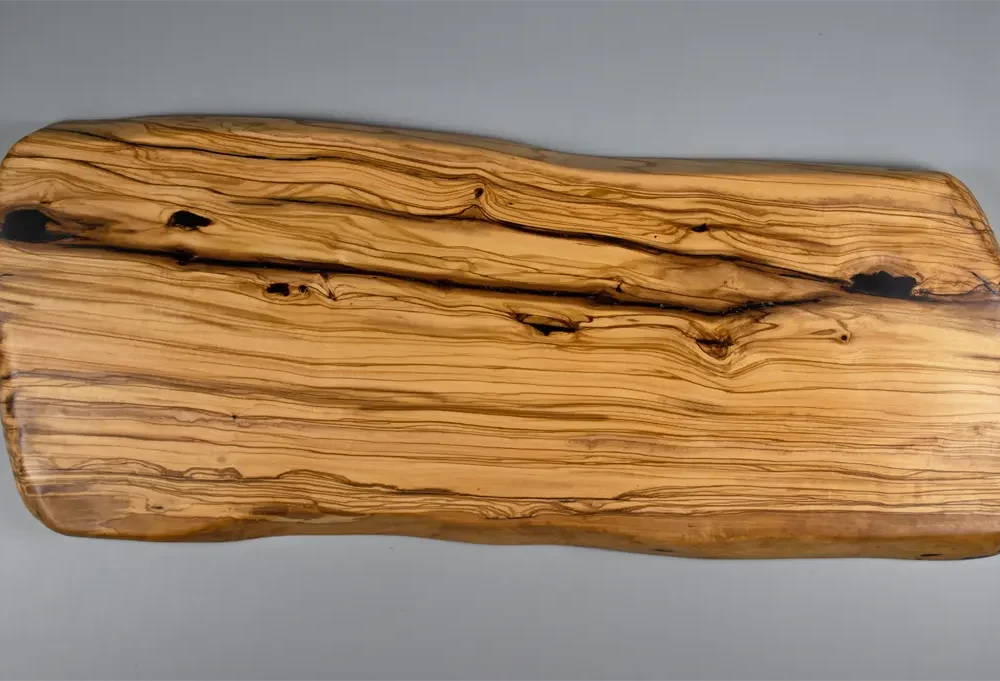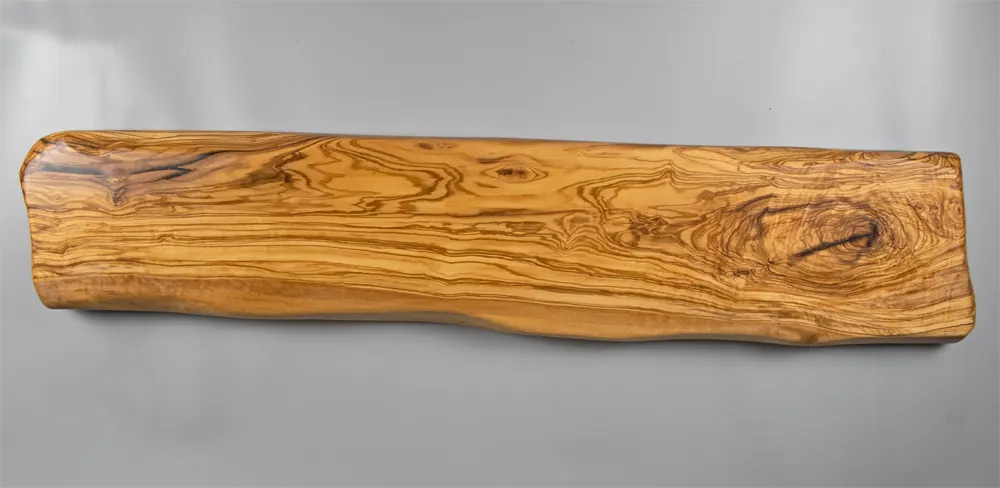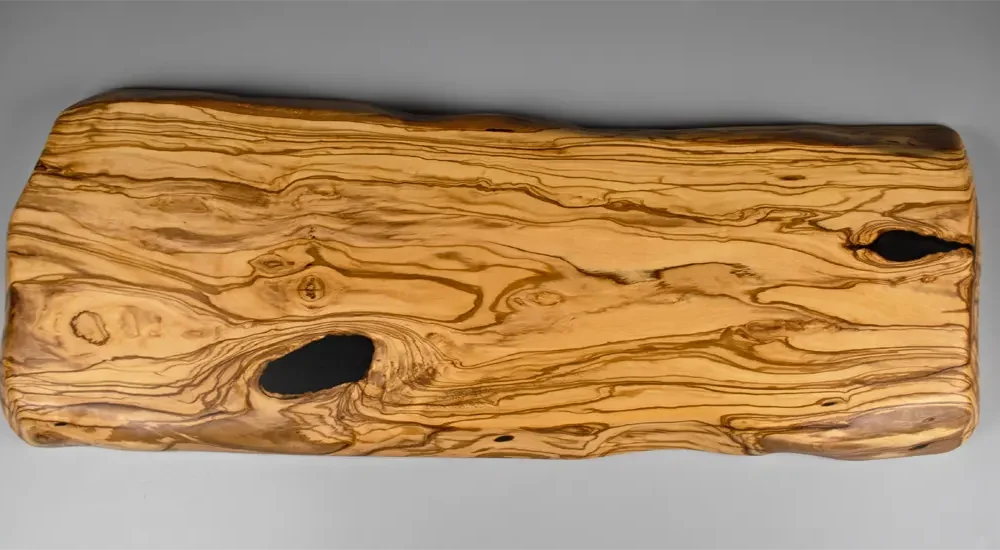Olive Wood: Uses and Characteristics
Olive wood is known for its natural beauty, strength and durability.
This wood, which comes from the olive tree (Olea europea), although its wood has traditionally been used as firewood, has been used for centuries in the manufacture of kitchen utensils thanks to its distinctive grain and high density.
Below, we will explore in depth the main characteristics of olive wood and its most common uses.
What is Olive Wood?
The olive tree is a typically Mediterranean tree, valued both for its fruit and its wood.
Olive wood has a warm color ranging from light yellow to dark brown tones, with brown and black streaks that give it a unique visual appearance.
This wood is prized for its aesthetic beauty and its ability to resist wear and tear, making it ideal for a wide range of applications such as cutting boards or other kitchen utensils.
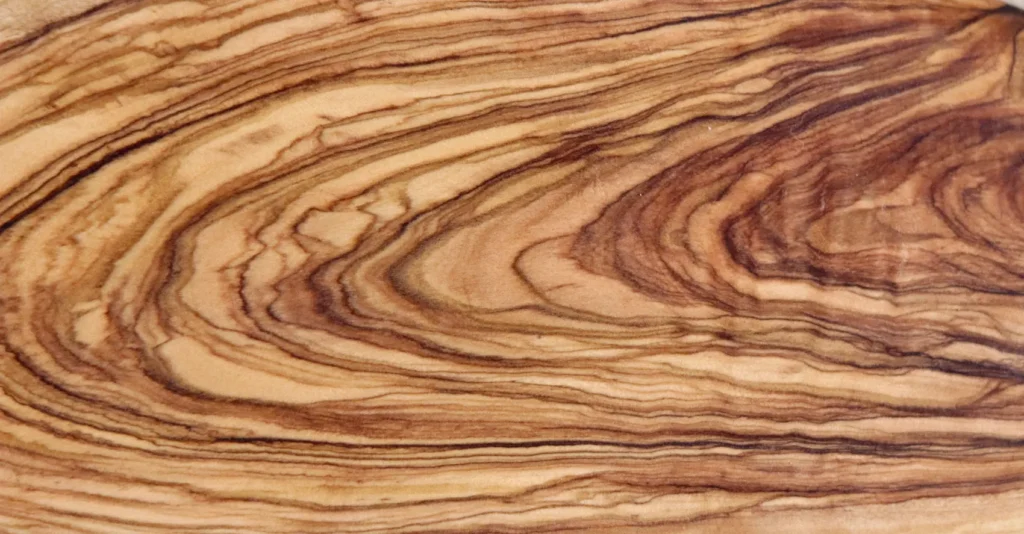
Olive Wood Properties
Hardness and Density
Olive wood is very dense, with a density of around 920 kg/m³. This high density gives it great resistance to impact and wear, making it suitable for products that require durability and resistance to intensive use.
Unique Appearance
One of the most distinctive characteristics of olive is its striking grain, with veins that create irregular patterns and colorations that can range from light to dark. This unique aesthetic is ideal for decorative products or furniture that seeks to stand out for its natural beauty.
Moisture Resistance
Although it is not a particularly weather- and insect-resistant wood, olive has a moderate resistance to moisture. This makes it suitable for kitchen utensils, provided it is properly maintained.
Low dimensional stability
In spite of its hardness, olive wood can show a certain tendency to deform with sudden changes in temperature and humidity. It is important to dry it properly before use and to give it an adequate treatment to avoid deformation.
Technical characteristics of olive wood
| Feature | Value / Description |
|---|---|
| Common name | Olive wood |
| Scientific name | Olea europaea |
| Colour | Light brown to dark brown with irregular veins |
| Texture | Fine and uniform |
| Grain | Irregular, often interlaced |
| Density (at 12% humidity) | 900–1100 kg/m³ (very heavy) |
| Monnin hardness | 9.0–9.5 (very hard) |
| Janka hardness | 2.760 lbf (12.280 N) |
| Volumetric shrinkage | 16.5% (high) |
| Dimensional stability | Medium – low |
| Natural durability | High resistance to fungi and insects |
| Workability | Difficult, but with excellent finish |
| Common uses | Lathes, tool handles, furniture, decoration |
| Regions of origin | Mediterranean basin (Spain, Italy, Greece, etc.) |
| Sustainability | High, especially when old trees are harvested |
Uses of Olive Wood
Kitchen Utensils and Cutting Boards
One of the most common uses of olive wood is in the manufacture of cutting boards and kitchen utensils such as spoons, spatulas and bowls. Its high density makes it resistant to cuts and its natural grain brings a unique aesthetic touch to the kitchen. In addition, its low porosity contributes to maintaining hygiene by preventing the accumulation of bacteria.
Olive kitchen utensils, especially olive cutting boards, have become popular in recent years.
Find our olive tree planks in the Unique Planks section.
Small objects and handicrafts
Because of its uniqueness and natural beauty, the olive tree is also used in the manufacture of small objects and handicrafts. Boxes, jewelry boxes and other objects for personal use can be found made of olive wood. In some cases, you can find bathroom picks and other larger objects made with this wood.
Epoxy tables
Although it is not common to build furniture from olive trees, epoxy tables are often made from the larger trees.
Olive Wood Advantages and Considerations
Advantages
- Unique Aesthetics: The irregular grain and grain of olive wood creates visually striking pieces, making it ideal for high-end and decorative products.
- Resistance: Its hardness and density give it excellent resistance to wear, making it perfect for cutting boards and other kitchen utensils that must withstand continuous use.
- Low Porosity: This allows kitchen utensils made of olive to maintain good hygiene, as they do not absorb liquids easily.
Considerations
- Difficult to work with: Due to its high density, olive wood can be difficult to work with, especially in applications that require detailed work or fine cuts.
- Outdoor Limitations: Although it is moisture resistant, it is not the best choice for outdoor applications unless properly treated to protect it from weathering and insect attack.
- Low availability: Due to the small size of the olive tree, its slow growth and commercial yield, the olive tree is scarce and tends to be marketed mostly in small planks or boards. Its price per m3 rises considerably in planks that exceed 20 cm in width.
- Low dimensional stability: Its tendency to deform makes us recommend its use in slatted boards or boards of moderate to high thickness to avoid deformations that may hinder its use.
- Defects: Often the olive tree has a large number of defects such as holes, hollow knots or cavities due to the way the tree grows. Obtaining defect-free boards is difficult but in high demand. Defects are usually sealed with epoxy resin.
Conclusion
Olive wood is seeing an increasing demand in timber. This wood is an excellent choice for those looking for a strong, durable and aesthetically appealing material. Its use in kitchen utensils and decorative pieces stands out for its ability to combine functionality with a natural beauty that few other woods can offer. With proper care and treatment, olive trees can last for generations, maintaining their visual appeal and structural integrity over time.
Our products with olive wood
-
 Olive Wood Board 3€ 220,00
Olive Wood Board 3€ 220,00 -
 Olive Wood Board 2€ 260,00
Olive Wood Board 2€ 260,00 -
 Olive Wood centerpiece€ 400,00
Olive Wood centerpiece€ 400,00 -
 Olive Wood Board 1€ 280,00
Olive Wood Board 1€ 280,00
FAQ – Frequently asked questions about olive wood
What is olive wood and what is it used for?
Olive wood comes from the olive tree and is used for cabinetmaking, decorative objects, kitchen utensils, and lathe work.
What are the main characteristics of olive wood?
It is a very hard, heavy wood, with striking grain and great resistance to wear.
Is olive wood resistant to moisture?
It has a medium resistance to humidity, but it is recommended to protect it properly to avoid deformation.
Is it difficult to work with olive wood?
Yes, due to its high density and interlocking grain, it can be difficult to cut or plane, but it offers very fine finishes.
Is olive wood good for furniture?
Yes, although it is used more in small or luxury furniture due to its price and difficulty of work.
Is the use of olive wood sustainable?
Sí, generalmente se obtiene de árboles no productivos o podas, lo que la convierte en una opción sostenible.
Where is olive wood grown and produced?
Mainly in Mediterranean countries such as Spain, Italy and Greece.
Can olive wood be used for flooring or decking?
It is not common for flooring due to its dimensional instability, but can be used in decorative details.
What care does olive wood need?
It is recommended to apply natural oils or waxes to maintain its shine and protect it from moisture.
What differentiates olive wood from other fine woods?
Its density, natural durability and spectacular grain pattern make it unique and highly valued.
Otras entradas del blog

Cedar Wood: Uses and Characteristics
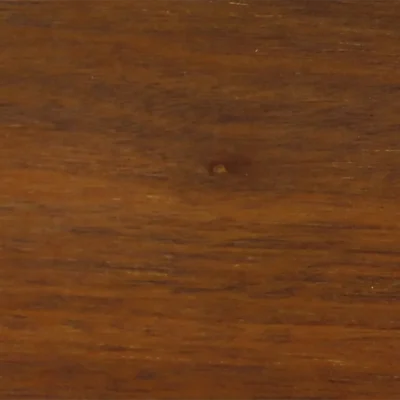
The 10 hardest woods in the world
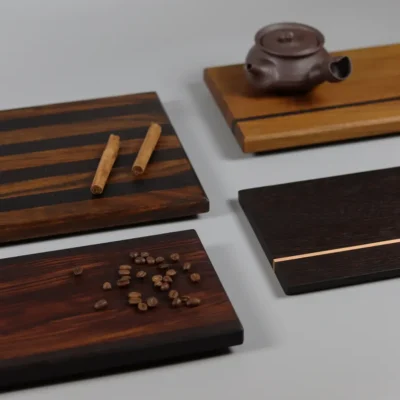
Restaurant serving boards: a complete guide

Black Wood: Species and Uses
Nuestras tablas de cortar:
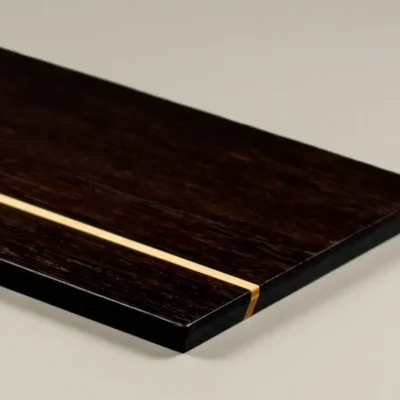
NIGRA
serving board
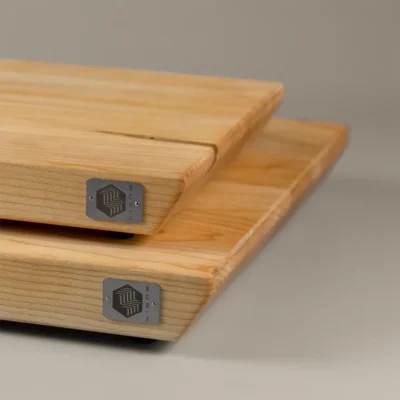
Linea
Maple grain maple board
Linea
Maplegrain maple board

ARGILLA
long charcuterie board
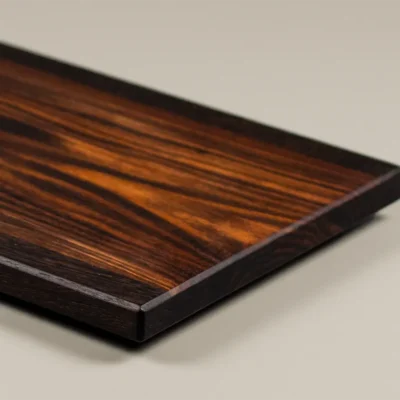
NUBILA
wooden cheese board
